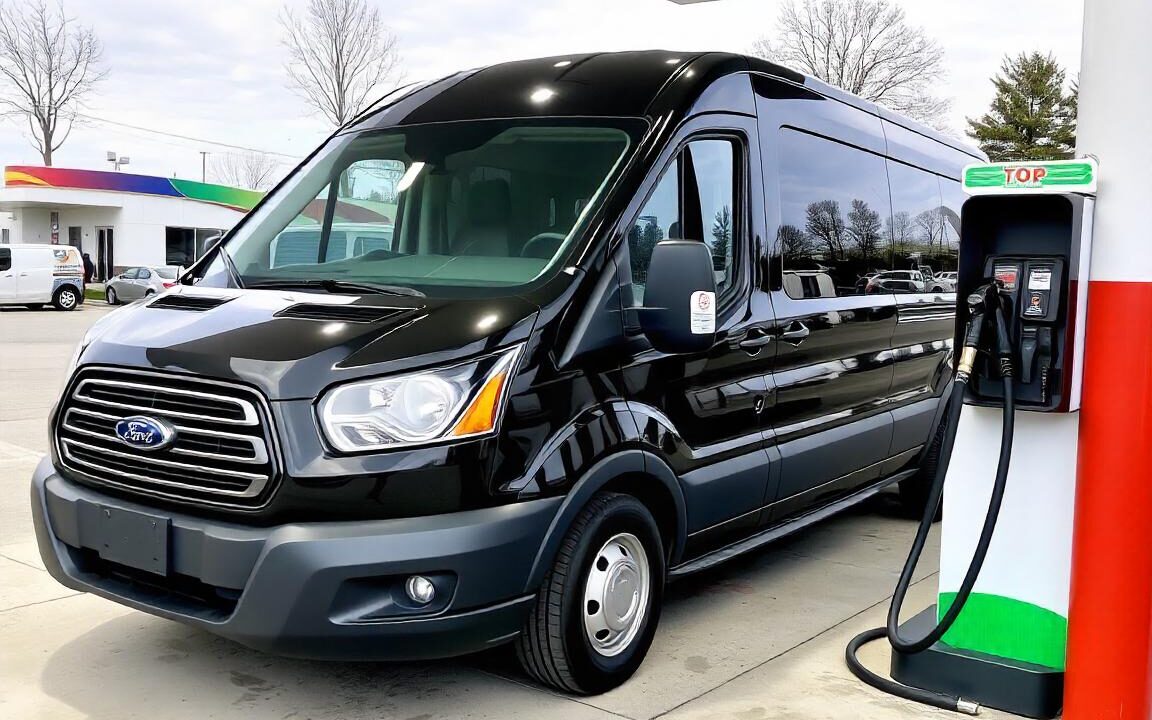Road trip ready requires a bit more than a vehicle and a destination. Your budget plays an essential role, and gas prices are one of the leading costs to consider. In this guide, we’ll tell you how to calculate gas cost for a trip and the information you’ll need to home in on an exact number.
How much gas do you need for a trip?
So, you’re hitting the road for a cross-country road trip with family or a fall foliage tour in New England, and renting a stylish passenger van that’s spacious enough for everyone. Not sure how much money you’re going to need to cover travel expenses?
In addition to daily rental fees and parking costs, you’re likely wondering how to calculate gas cost with a vehicle of that size. Let’s break it down, starting with the essentials.
The essentials: what to know about your vehicle
Let’s start with the vehicle itself. If you’re renting a passenger van for your upcoming road adventure, you’ll want to determine a few points.
Your vehicle’s fuel efficiency
Finding out the van’s fuel efficiency will help you predict what you’ll be spending on gas. For example, a Greenvans Ford Transit van offers 17 – 21 miles per gallon (MPG) complemented by its fuel-efficient EcoBoost turbo engine.
Route information
When planning your route to a destination, it’s essential to choose the most direct and efficient path for your passenger van. Identify roads that are wide enough and overpasses that are tall enough to accommodate your vehicle. Additionally, avoid areas with heavy traffic, particularly in city driving, to ensure a smoother journey.
Distance of your trip
Now that your route is clear, it’s time to calculate the distance you’re going. How many miles will you cover in total? Add some extra miles as a buffer, just in case an unavoidable detour pops up while on the road.
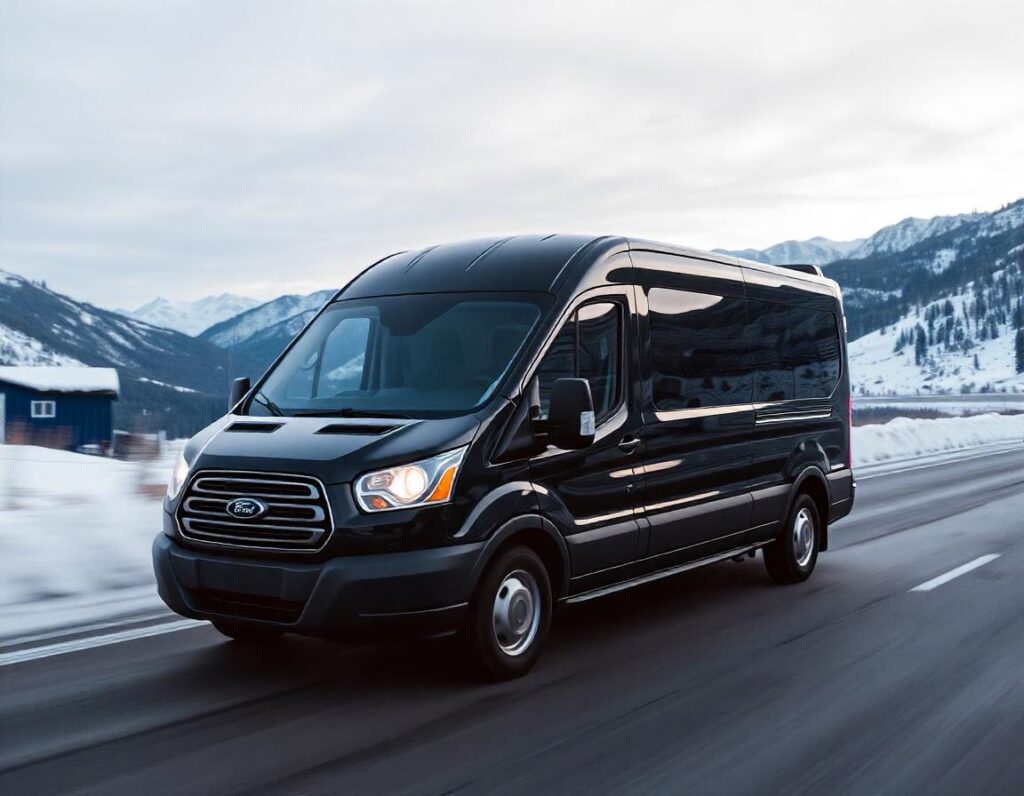
Going the distance: how to calculate how far you’re going to drive
Speaking of distance, when researching how to calculate gas for a trip, how far you’re going must be clear. Here are a few tips to keep in mind.
Using online maps and navigation tools
The best way to get started is by using maps and tools like Google and Waze which compute the best routes according to traffic patterns, accidents, and road closures.
Accounting for detours and stopovers
Accidents can cause delays and add mileage. Budget for unexpected traffic stops and alternate routes by adding a mileage buffer. Also, calculate extra distance for stopovers, like that famous roadside attraction on your road trip through Maine.
Considering round-trip calculations
Are you interested in a one-way rental or round-trip? If you’re returning the van back to its original location, save money on gas by choosing the most straightforward route and avoiding many stops.
Gas prices 101
Here’s what to know about gas prices when calculating things for your road trip.
Checking current local prices
Find accurate and up-to-date gas prices in the areas you’ll be driving through using websites like GasBuddy and Autoblog. You can easily calculate gas cost by looking up current prices in each city or ZIP code, and plan stops at stations with the lowest rates.
Using national and state averages
Another great way to calculate gas cost is by finding current national or, even better, state averages. This helps account for regional fluctuations and gives you a more general pricing estimate.
Incorporating possible price fluctuations
Remember: cost doesn’t change only according to region. Geopolitics, international trade, and natural disasters can all affect the price of gas. Safeguard yourself from changing prices by keeping up to date with possible rises.
Your step-by-step gas price calculation process
Calculating the total gas cost for your trip involves a straightforward three-step process. Here’s how to do it.
Calculating total distance
Step 1: Total Mileage
Determine the total distance of your trip with a mapping tool, accounting for planned stops, detours, or side trips that may add to overall mileage. For example, if your trip is from Boston to New York but you want to take a quick stop in Providence, add the additional mileage to your total.
Applying fuel efficiency to distance
Step 2: Total gas needed
Next, you need to know your vehicle’s fuel efficiency, measured in miles per gallon (MPG). Check the vehicle’s specifications or ask the rental agency. With the total distance and the MPG, you can calculate the amount of gas needed for your trip by dividing the total distance by miles per gallon.
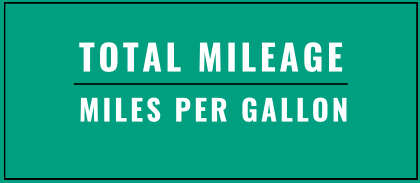
Estimating total gas cost
Step 3: Total gas cost
Finally, to estimate the total gas cost, you need to know the current gas price per gallon. Using our suggestions above, consult an app like GasBuddy for regional, state, or national averages and multiply it to the figure above.
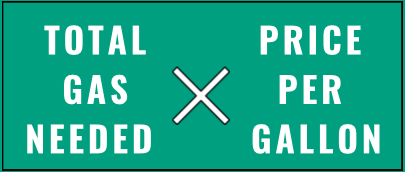
Additional factors
A few additional things to keep in mind when contemplating how to calculate the cost of gas for a trip include:
Factor in traffic and road conditions
Stop-and-go traffic, construction zones, and hilly terrain can increase your fuel consumption. To account for the additional fuel consumed during idling and acceleration, reduce your MPG estimate by one or two counts.
Consider vehicle load and performance
The more people and cargo, the more fuel consumed. Extra weight requires more power from the engine, causing MPG to decrease. As a general rule, fuel efficiency can decrease by about 1-2% for every additional 100 pounds in weight.
If overweight cargo is a concern, check out our car-packing tips meant to help you maximize space and bring what you need.
Regularly checking fuel efficiency
So many leisure vans today come equipped with technology that enables you to check the fuel efficiency while driving. For instance, a Greenvans’ Ford Transit 350 XLT Mid-Roof has an onboard computer that provides real-time data on fuel efficiency, so you can monitor MPG on the road.
Understanding the impact of driving habits
Knowing how to calculate gas price for a trip is more than a numbers game. Keep fuel consumption steady by incorporating smooth driving techniques, maintaining a steady speed and refrain from sharp braking. Aggressive driving isn’t just dangerous, it’s also expensive!
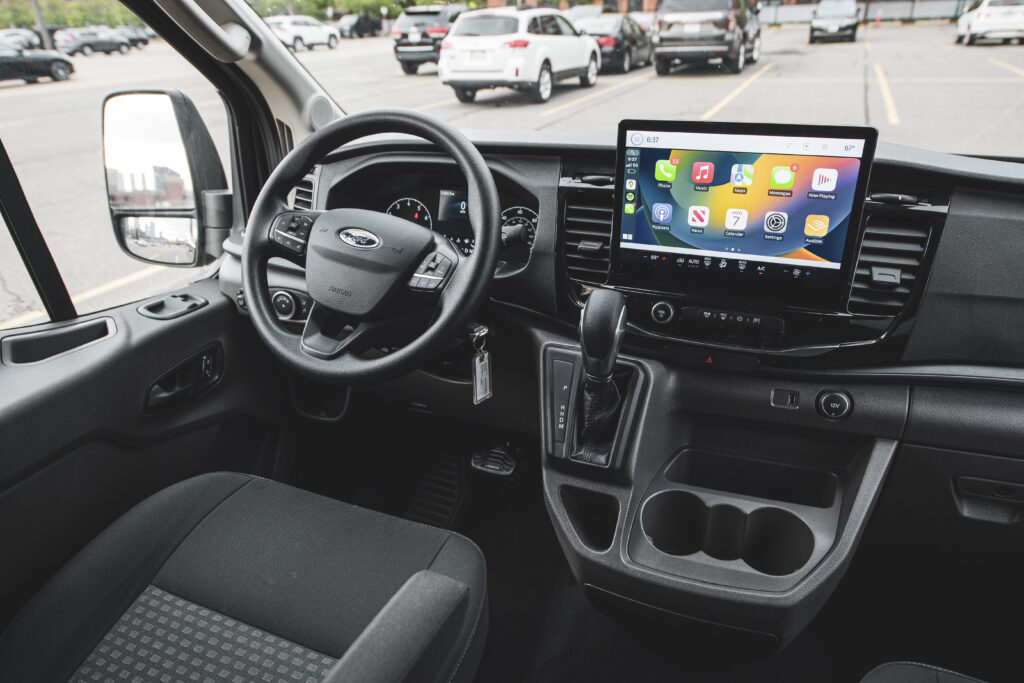
Tools and resources for calculating gas for a road trip
Let’s round up a few of the best resources and tools to calculate gas cost on your upcoming trip.
Online calculators and apps
- GasBuddy: The trip cost calculator can estimate fuel costs when providing your destination and vehicle type. In addition, it will inform you of gas prices at stations along your route.
- Gas Costs: Estimates gas expenses for your trip and offers route planning features that identify the most fuel-efficient ways to get where you want to go.
- Fuel Economy: The U.S. Department of Energy has a trip calculator that estimates fuel costs based on vehicle type and trip details. Users can modify routes and view real-time fuel prices.
Fuel efficiency databases
In addition to its trip calculator, Fuel Economy has a comprehensive database of vehicle fuel efficiencies. Find the MPG ratings of any vehicles to identify gas cost calculations.
Navigation and mapping services
These navigation apps will provide directions and optimize routes, as well as identify nearby stations and gas prices:
- Google Maps
- Roadtrip
- Waze
Staying updated with gas prices
As mentioned, GasBuddy’s price map organizes real-time gas rates by state or zip code, serving as a useful tool for planning stops during a road trip.
Keeping a trip log
Since this is likely not the last road trip you’ll ever take (hello, Grand Circle national park tour!) maintaining a trip log may make upcoming trips easier. Record the distance traveled, fuel purchased, and gas prices at each stop in a notebook or on an app like TripLog. This helps you analyze spending and adjust for the future as needed.
FAQs about calculating gas for a road trip
What factors affect fuel consumption on a road trip?
There are six factors that affect fuel consumption while driving:
- Driving habits: Aggressive acceleration, speeding, and frequent braking can lower fuel efficiency.
- Vehicle condition: Make sure the engine is properly tuned, tires inflated, and that brakes are in top condition to both stay safe and keep fuel consumption low.
- Route and terrain: Roads that are hilly, mountainous, or unpaved can reduce MPG.
- Passenger and cargo load: Many passengers, heavy cargo, and towing a trailer will reduce fuel efficiency.
- Weather and temperature: Cold weather can lower fuel economy, so be sure to properly warm your engine before hitting the road on your winter getaway.
- Heat and air conditioning: Running electrical accessories can decrease MPG.
How do I adjust my gas estimate for different driving conditions?
Here are three general rules to follow when calculating gas cost according to different driving conditions:
- Reduce MPG estimate by 30% for aggressive highway driving or 40% for aggressive city driving.
- Decrease MPG estimate up to 25% if running A/C on max.
- Account for extra fuel needed when towing a trailer or carrying heavy cargo, like production equipment or lots of sports gear.
What if my car’s fuel efficiency varies?
If you want to know how to calculate gas for a trip when your vehicle’s fuel efficiency varies, we recommend using the lowest MPG estimate when calculating the total cost.
How can I save money on gas during my trip?
To save money on gas during your trip:
- Download an app like GasBuddy, which highlights stations with the cheapest gas prices along your route.
- Avoid filling up at stations near major highways which tend to have higher prices.
- Maintain steady speeds and optimize fuel efficiency with cruise control.
Are there alternative fuels to consider?
There are alternative fuels to consider, however you must first confirm that your vehicle is compatible. If so, consider alternative fuels like:
- Ethanol-blended gasoline
- Diesel fuel, which is more energy-dense than gasoline
You can also consider renting a hybrid or electric vehicle to save money on gas.
Save money with our fuel-efficient passenger vans for your next group trip – get a free quote here!
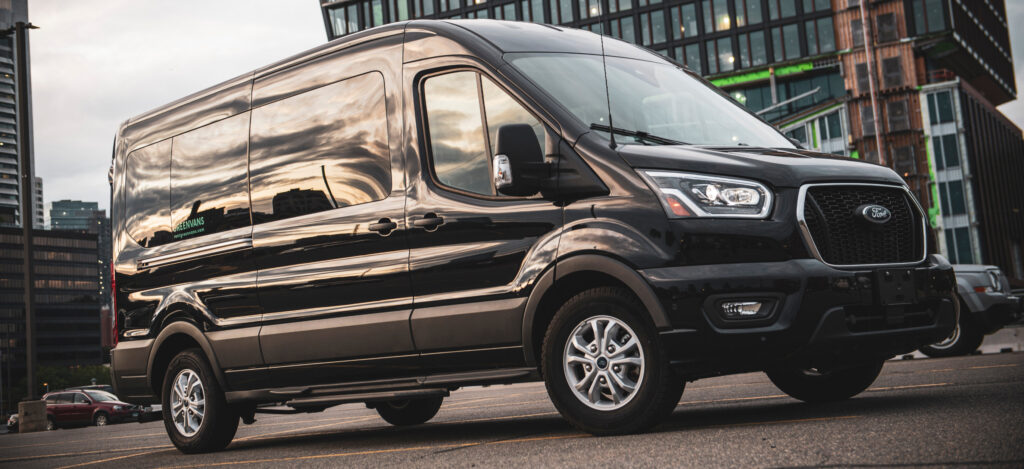
Share:
